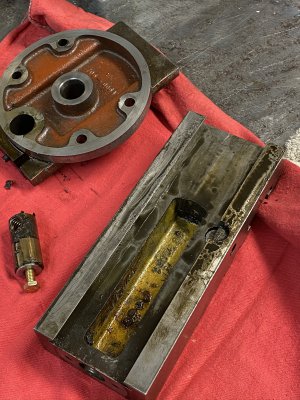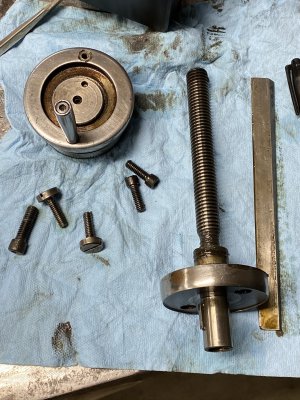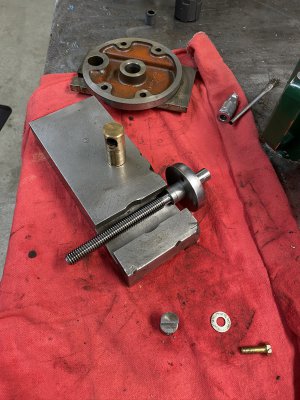Hi gang,
I hope you and yours are all staying healthy!
I decided to take the compound off my 1970 Clausing Colchester 15X50 lathe to clean and inspect.
I stripped it down but I can't get it off the cross slide.
I believe it is hanging up on the compound Acme nut. I don't see any way of removing the nut with the compound installed.
Have any of you done this job before?
I can't remove the assembly from the cross slide because the nuts bottom out on the under side of the topside.
Please see the parts break down.
As a side note, I am very happy to report there is no visible wear in the acme screw!!
Thank you,
Jeff
I hope you and yours are all staying healthy!
I decided to take the compound off my 1970 Clausing Colchester 15X50 lathe to clean and inspect.
I stripped it down but I can't get it off the cross slide.
I believe it is hanging up on the compound Acme nut. I don't see any way of removing the nut with the compound installed.
Have any of you done this job before?
I can't remove the assembly from the cross slide because the nuts bottom out on the under side of the topside.
Please see the parts break down.
As a side note, I am very happy to report there is no visible wear in the acme screw!!
Thank you,
Jeff





